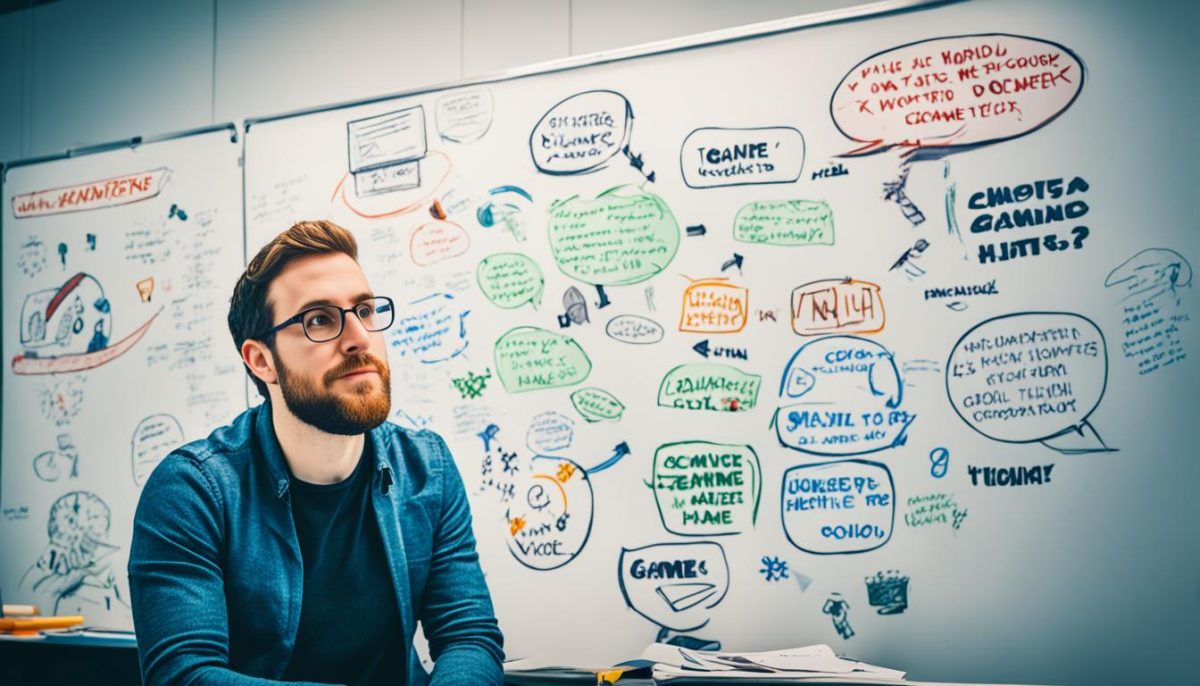Welcome, fellow dreamers and game enthusiasts! Are you ready to embark on an exhilarating journey to bring your indie game dreams to life? Look no further, because in this section, we will guide you through the process of making your own indie game, step by step.
Indie game development is an art that requires a unique blend of creativity, perseverance, and technical skills. We understand the challenges and excitement that come with turning your passion into a reality. Whether you’re a seasoned developer or just starting out, we’re here to help you navigate the intricate world of indie game creation.
Together, we’ll explore the essentials of conceptualizing, developing, and launching your indie game. From crafting a captivating concept and designing innovative gameplay to mastering the art of programming, artwork, and sound design, we’ve got you covered. We’ll equip you with the tools, tips, and insights you need to stand out in the competitive indie game industry.
But it doesn’t end there. We know that making an indie game is not just about development; it’s also about getting your game noticed and building a supportive community. That’s why we’ll dive into the world of indie game marketing, helping you create effective strategies to promote your masterpiece and cultivate a loyal following.
So, buckle up and get ready to unleash your creativity, because we’re about to embark on an epic adventure together. Together, we’ll make your indie game dreams a reality. Let’s dive in!
Conceptualizing Your Indie Game
Before embarking on the development journey, it’s essential to lay the foundation for your indie game with a compelling concept. This is where game design and unique gameplay ideas come into play. The success of your indie game hinges on the ability to captivate players with an original and engaging experience.
When it comes to game design, think of it as the blueprint for your creation. It involves crafting the rules, mechanics, and aesthetics that shape the player’s interaction and overall experience. A well-designed game will not only attract players but also keep them coming back for more.
Brainstorming unique gameplay ideas is a crucial part of the conceptualization process. Indulge in creative thinking and let your imagination run wild. What makes your game different from others? What innovative mechanics or features can you introduce to the gaming world? Consider what sets your indie game apart and how it will leave a lasting impression on players.
Defining the core elements that make your game stand out is vital. Whether it’s an intriguing narrative, visually stunning graphics, or addictive multiplayer functionality, these unique features will be the pillars on which your game rests. Unleash your creativity and think outside the box to create an experience that resonates with players.

“Game design is like storytelling, and the gameplay is the vehicle for your narrative.”
Remember, while it’s important to draw inspiration from successful games, don’t fall into the trap of replicating their ideas. Your indie game should have its own identity and offer something fresh to the gaming community.
By focusing on game design, brainstorming unique gameplay ideas, and defining core elements, you’ll lay a solid groundwork for your indie game. So grab a pen and paper, let your imagination soar, and start shaping your vision into a compelling and unforgettable gaming experience.
Developing Your Indie Game
Now that you’ve conceptualized your indie game and defined its unique gameplay, it’s time to dive into the development stage. This is where the magic happens as you bring your game to life and transform your vision into a playable reality.
Choosing the Right Tools and Programming Languages
When it comes to game development, selecting the right tools and programming languages is crucial. It can significantly impact the efficiency and success of your project. Consider your team’s skillset, the requirements of your game, and the platform you plan to release it on.
Popular game engines like Unity and Unreal Engine provide powerful and accessible tools for developing indie games. They offer a wide range of features and support multiple platforms, making them ideal choices for many developers.
If you prefer to code your game from scratch, languages like C++, C#, and JavaScript are widely used in the game development industry. Each language has its strengths and weaknesses, so choose the one that aligns with your project’s specific needs.
Creating Captivating Artwork
Artwork plays a vital role in the visual appeal of your indie game. It helps to establish the game’s atmosphere, convey its narrative, and captivate players. Whether you’re an artist or working with a dedicated art team, here are a few tips to consider:
- Develop a cohesive art style: Define a consistent art style that complements your game’s theme and delivers a polished visual experience.
- Create detailed character and environment designs: Pay attention to the finer details to give your game depth and make it visually appealing.
- Optimize assets for performance: Balance visual quality and performance by optimizing textures, models, and animations to ensure smooth gameplay.

Designing Engaging Sound
Sound design is another crucial aspect of indie game development. It enhances the player’s immersion, creates ambiance, and amplifies the gaming experience. Here are some tips for designing engaging sound:
- Create unique sound effects: Craft distinctive sounds that align with your game’s mechanics, actions, and environment.
- Compose a captivating soundtrack: Develop a soundtrack that complements the mood and pacing of your game, whether it’s energetic, atmospheric, or emotional.
- Implement dynamic audio: Use audio systems to dynamically adjust sound based on in-game events, creating a more immersive experience.
Achieving a Seamless Gameplay Experience
While game development involves various aspects, it’s crucial to keep the gameplay experience at the forefront of your mind. Ensure that your game is intuitive, responsive, and enjoyable to play. Regular playtesting and gathering feedback from players will help identify and address any issues or areas for improvement.
By focusing on game development, programming, artwork, and sound design, you’ll be able to create an indie game that captivates players and leaves a lasting impression. Remember that patience, perseverance, and creativity are key as you navigate the challenges and joys of bringing your vision to life.
Marketing and Launching Your Indie Game
Now that your indie game is ready, it’s time to shift gears and focus on bringing it to the masses. We understand that marketing can be overwhelming, but fear not! We’ve got your back.
Indie game marketing is all about spreading the word and generating buzz around your creation. To start, it’s important to have a well-defined launch strategy. This involves identifying your target audience, researching competitor games, and determining the best platforms for promotion.
Building a community around your indie game is key to its success. Engage with potential players through social media, forums, and gaming events. Encourage them to share their thoughts, suggestions, and excitement for your game. Remember, a dedicated fanbase can go a long way in generating organic interest and driving sales.
Don’t forget to leverage the power of influencers and game reviewers. Reach out to popular YouTubers, Twitch streamers, and bloggers who focus on indie games. Offer them early access to your game and ask for honest reviews. Their recommendations can significantly boost your game’s exposure and credibility.

